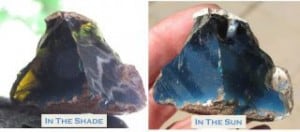
Glass shard coloration, “This particular piece was the opposite; found in the sun and saw the real color later”. – Brian Wolff
John Akers (see more of John’s Cartoons) produced some artwork for the Federation of Historical Bottle Collectors (FOHBC) for their signature magazine Bottles and Extras. This art appears each issue as a header for a section with special news, finds and of course wisdom. I use this art as a lead-in for a group of pictures of bottle and glass shards that have been posted in recent facebook chatter and on Peach Ridge Glass previously. These pieces of glass really do tell a story.
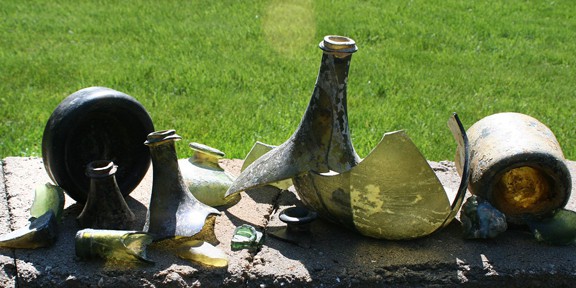
Here is some Wistarburgh glass excavated from the site by Boo Morcom some 50 years ago. It amuses me to see how similar the glass is to English counterparts… how does one tell the difference? Does it matter when dealing with object 250+ years old? I should note that some excavated Wistar glass has distictive characteristics, but this stuff looks very English and may be some of the earliest from the factory. – Michael George
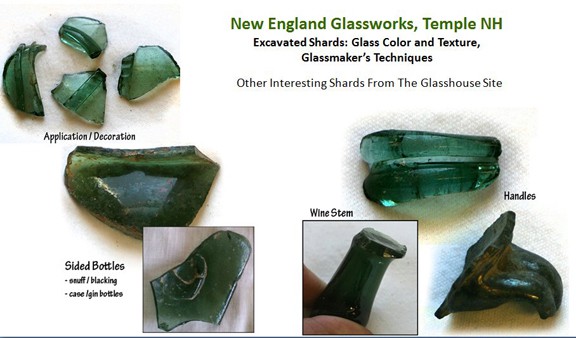
Funny we are talking about the New York strap handles… here is a slide from a presentation that did on NH glass. Note the handle form, from Temple NH in 1780! You also have a glimpse here of other excavated Robert Hewes glass. – Michael George
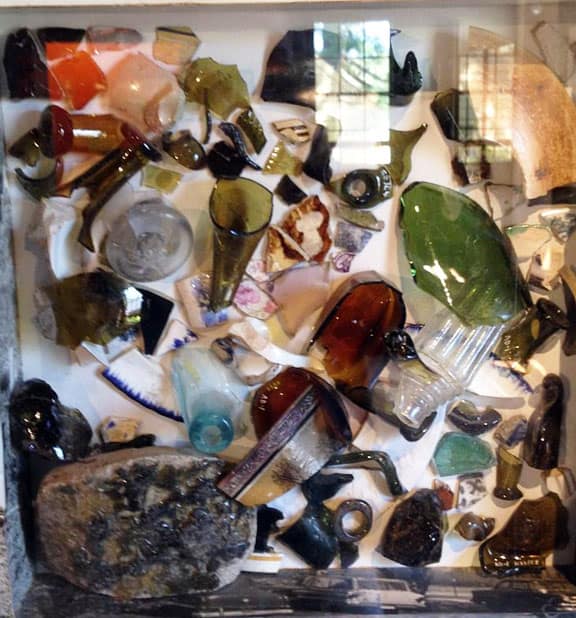
Shards from the Ken Wilson dig at the Glastonbury Glass Works. In the photo you will see several objects that obviously do not “fit” with what was being blown at Glastonbury, two later pieces (the base of a strap sided flask and the top to a Kilmer’s or Hood’s) and a contemporaneous piece of clear blown three mold that was almost certainly blown elsewhere. Obviously, MANY of the shards found on a Glass House were likely produced there but not ALL of them were. I am especially wary of singles and/or pieces that have no previous relationship with the Glass House site. – Jeff Noordsy
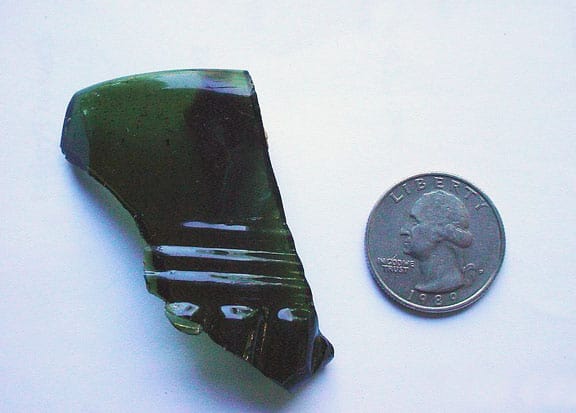
Found this GI-30 tumbler shard this weekend. The upper vertical ribbing is there very faintly and was swirled as the lip was formed. The GI-30 mold was used at Mt Pleasant in aqua and olive green glass. I feel that the mold was used almost exclusively for the glassblowers personal use, not as a commercial enterprise. I have some shards of amazing vessels in this pattern that I will found over the years. For those who do not know me, I have been researching Mt Pleasant for about 35 years. I have an extensive collection of organized shards from the area. My aim is identifying what was made there then trying to obtain intact specimens. The glassworks operated from 1846 when it moved from Mt Vernon, NY to 1866 when it moved again to Saratoga Springs and became known as the Congessville works. About 10 years after its closing at Mt Pleasant the entire village site was abandoned, minimizing later deposits of non-Mt Pleasant manufactured glassware. – Richard Strunk
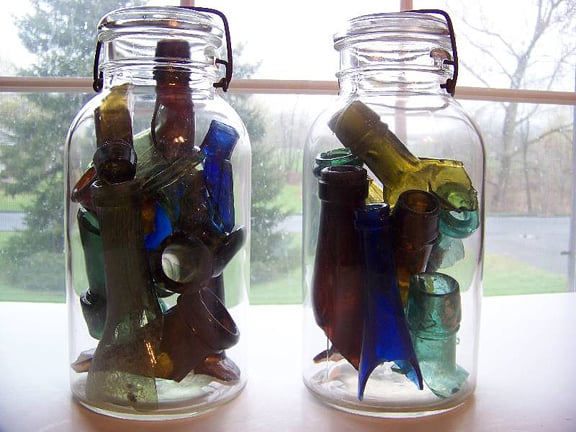
“Here’s how I display some of my pieces, in large clear glass jars. They really look great in the windows!” – Bill Bixby
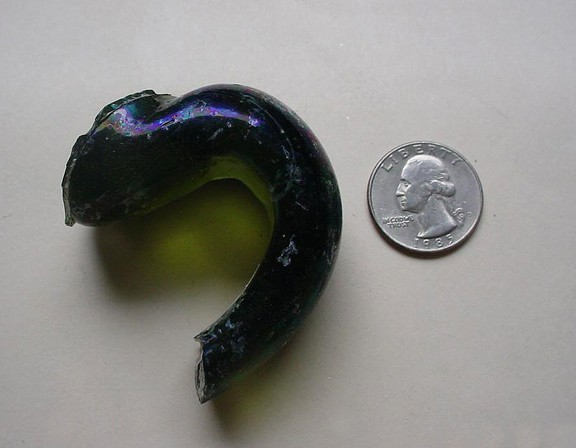
For you guys discussing NY state handle forms..I dug this at Mt Vernon last year. It is a limeish green color. – Richard Strunk
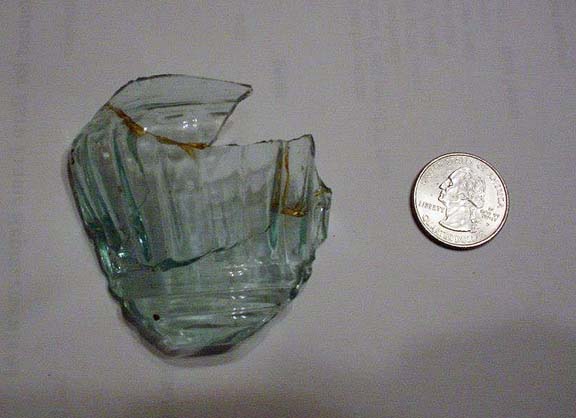
My best piece of BTM. GI-30 witchball. I found 2 of these broken in a glassblowers house dump site about 25 years ago. Norm H owns the only intact one knows. I saw his 2 weeks ago, it is larger with less pattern defination. The aqua piece I believe was a small handled creamer. This was found in a large factory and domestic dump site around the same time. – Richard Strunk
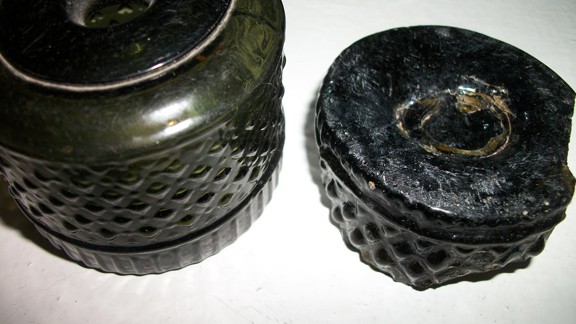
Okay all you BTM and ink experts…. I’m trying to identify this shard dug in Central NY (Mt Vernon?) It appears to be GII-18 similar to GII-18A but not the small size ink shown in Covill. It is photographed next to a GII-15 for size comparison. You will note that the base is unmarked and the vertical ribs along the sides near the base are very short. Anybody have a whole one? – Mark Yates
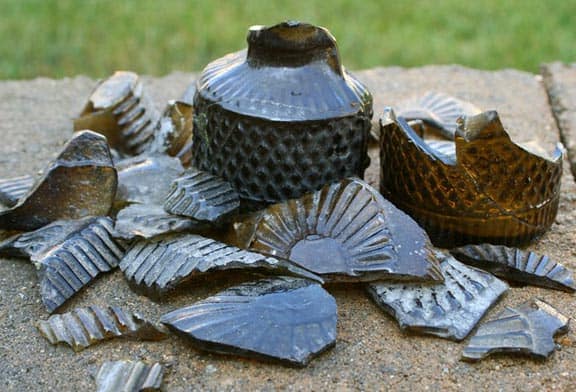
Note the GII-18 inkwell in the center, it was produced at Stoddard and excavated at the factory (yes BTM was produced there) and this piece was broken half way through the process. The neck would have been sheared, refired, and folded over (tooled) to create the disc top. – Michael George
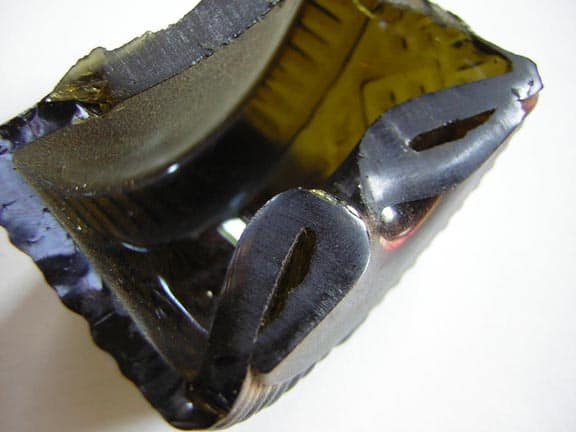
Cut in half geometric ink pertaining to the Pitkin ink discussion. it looks like one piece to me, no discontinuities. I can see in color or glass texture from body to neck. I think I may have seen an ink with a different colored mouth in a auction somewhere years back? – John April
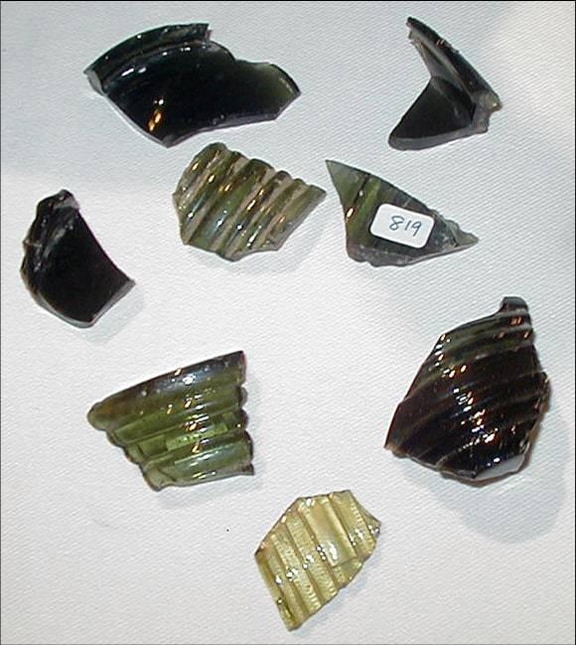
Annular Inkwell Shards, here are some shards excavated at the Pitkin site and used in a presentation I did a few years back at the Eastfield Village work shops. The simple fact there were so many in different colors, sizes etc…is some pretty credible attribution. – Rick Ciralli

Speaking of the “elusive” Temple glass… here are some lip treatments from the factory. I don’t think these have ever been published anywhere. – Michael George
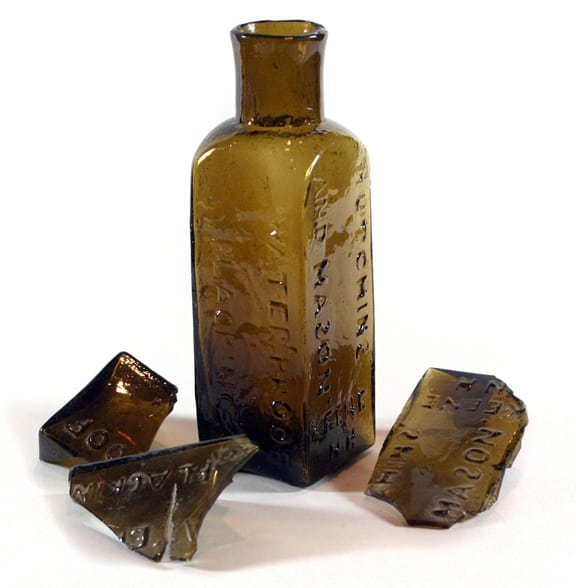
Here is a “Hutchins & Mason” waterproof blacking bottle. Although it is embossed “Keene, NH” it was made at Stoddard. There were shards found at the factory. – Michael George
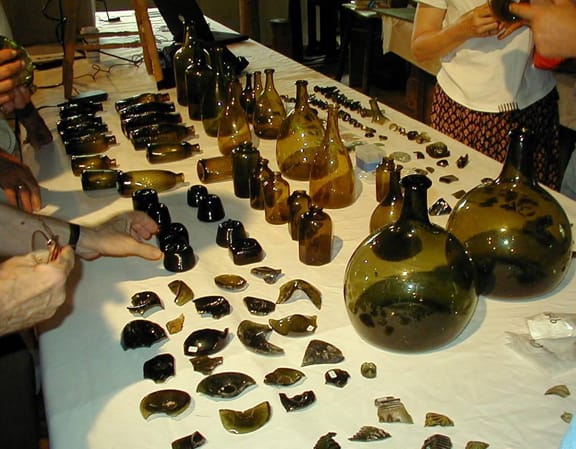
Here’s a cool pic from my presentation on Pitkin Glass at the Eastfield Village workshops. We had positive matched shards to Inkwells,snuffs, utilities, sunburst and pitkin flasks, chestnut & globular bottles to name a few. Everyone was having a great time studying and learning. We need to see more of this stuff…. – Rick Ciralli
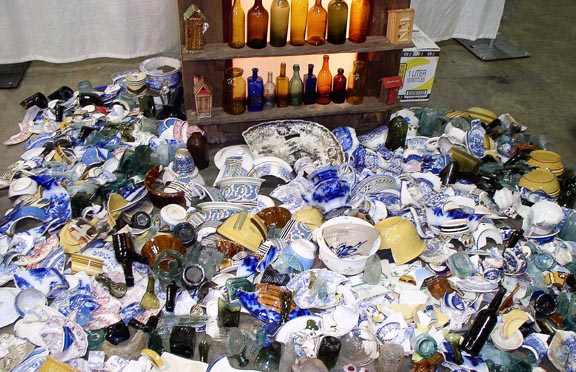
Huge pile of broken Victorian-era pottery and porcelain shards, (some are 1830s-1860s) with a bottle display case in the background was taken at the FOHBC Antique Bottle Show, in Louisville, Kentucky, June 28-29, 2003. It is a display of items rescued at a downtown Louisville construction area dig, The bottles in the background were a sample of the rarest Louisville-related bottles.
Read More: Bottle Shards in Window Jars – I like it!
Read More: London Jockey Club House Gin
Read More: Some Early Hostetter’s Stomach Bitters Shards Dug by Chris Rowell

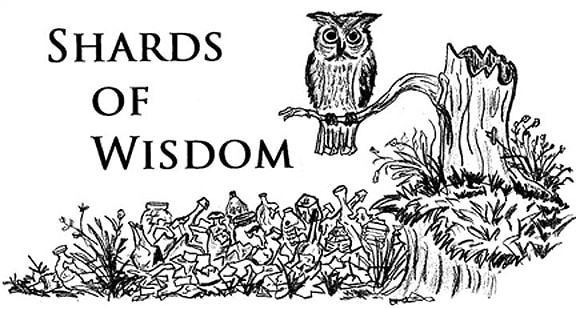
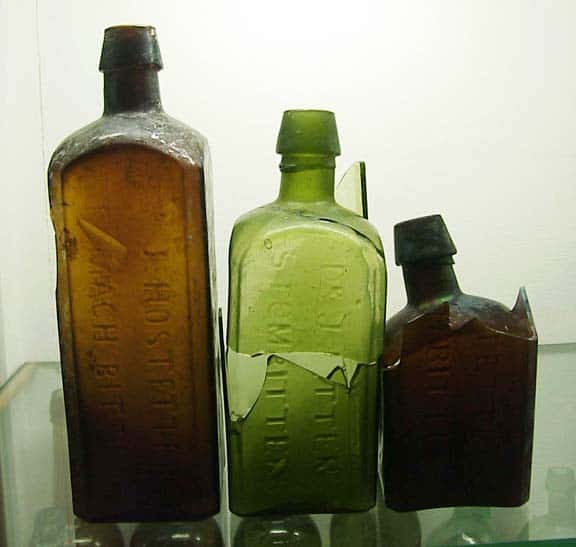
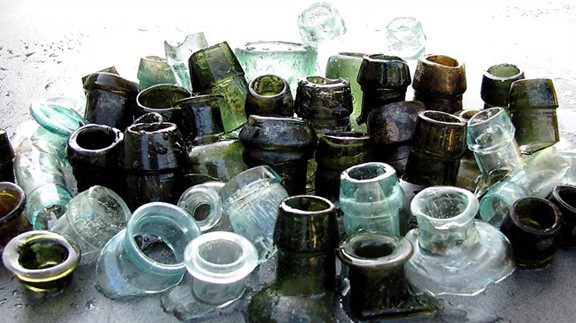
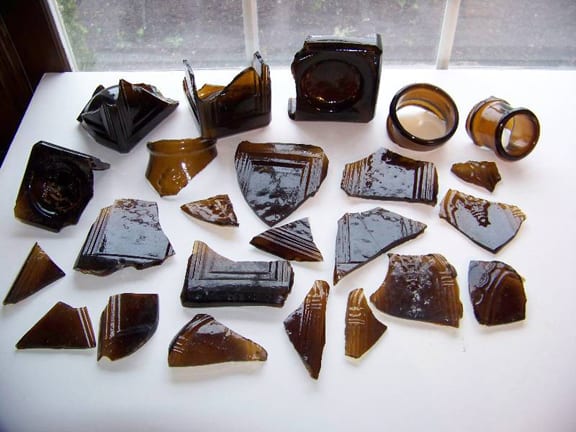
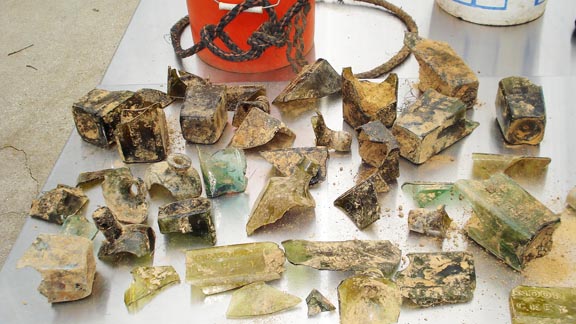
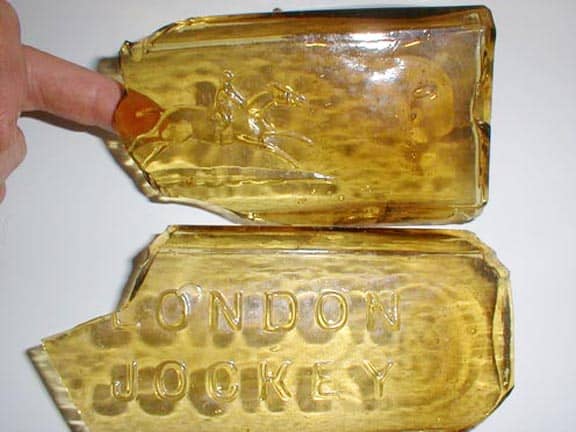
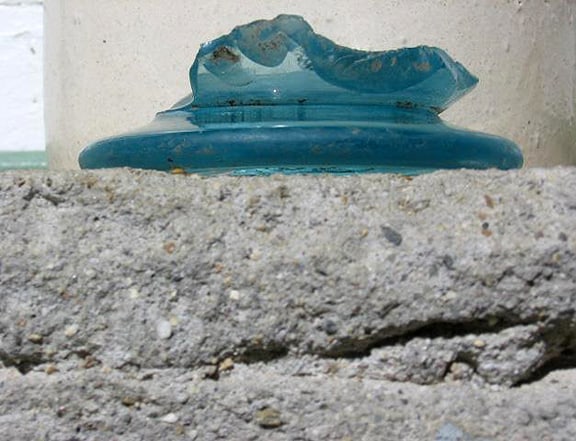
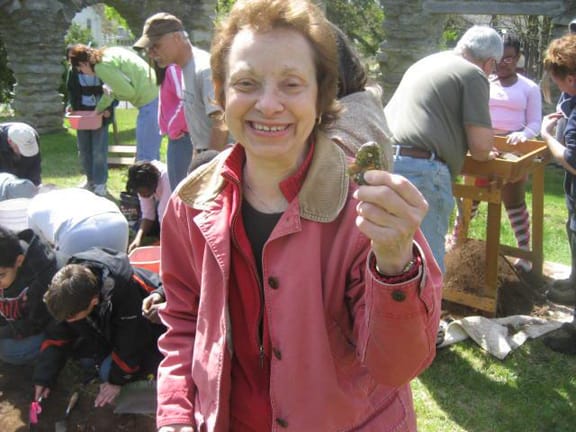
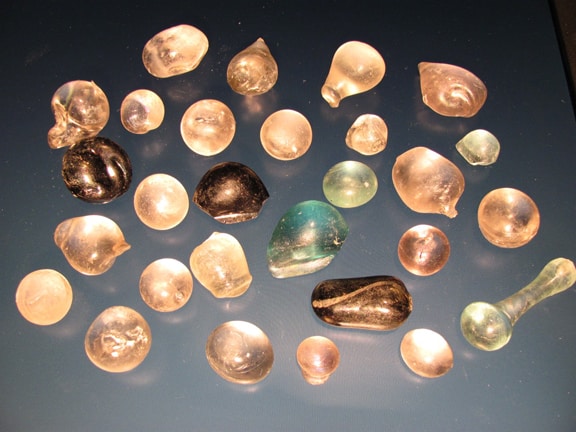
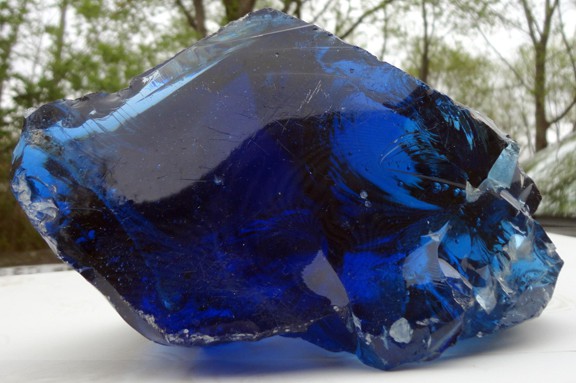
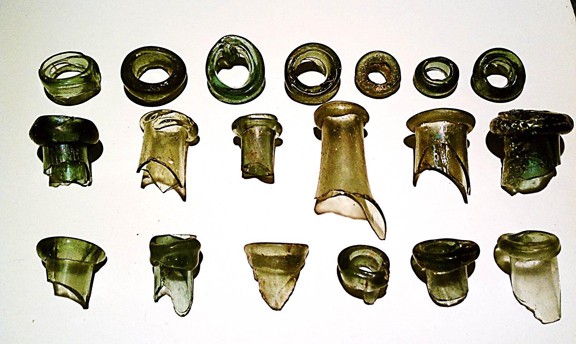









Very interesting! I have also been collecting shards of rare western bottles, mostly bitters. Several advanced western diggers/collectors from years ago also happened to dig sites that contained waste glass from the early western glass houses. It’s important that these relics be saved and studied. Great history.